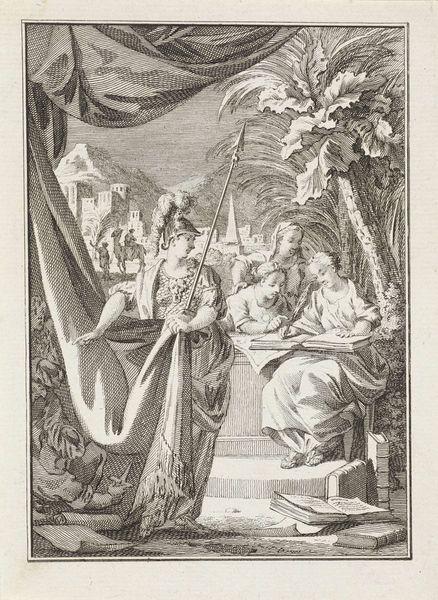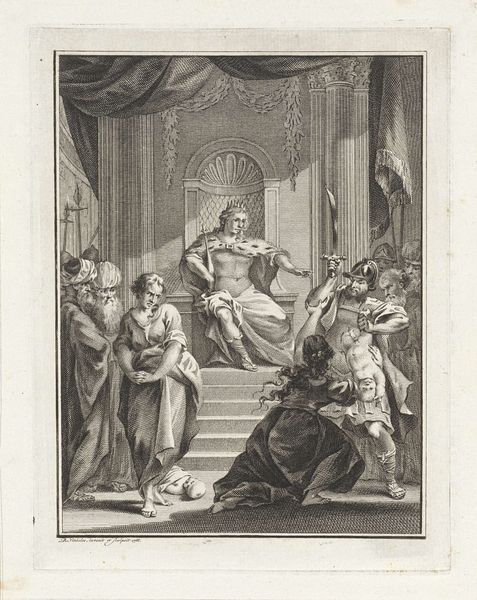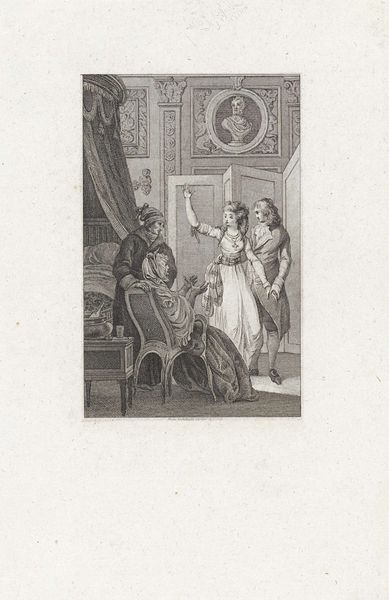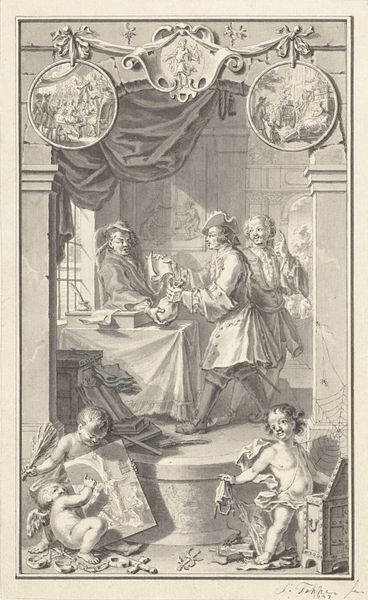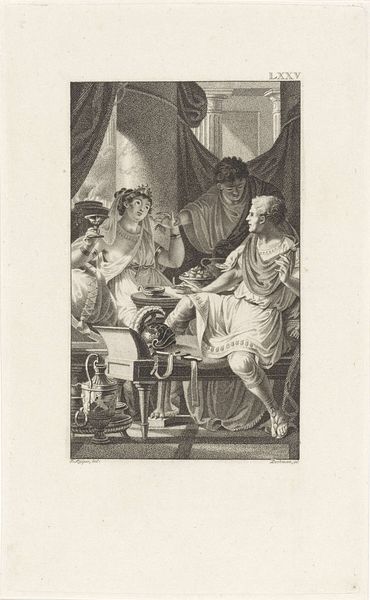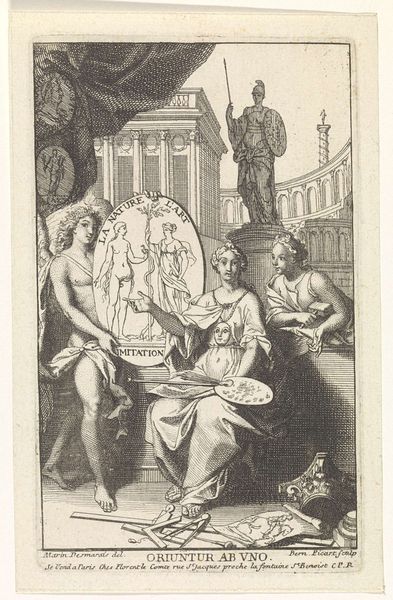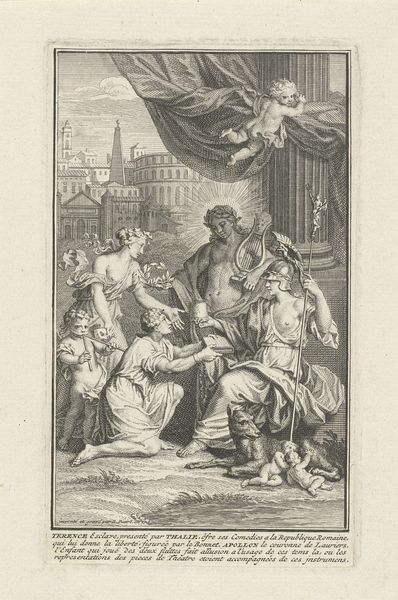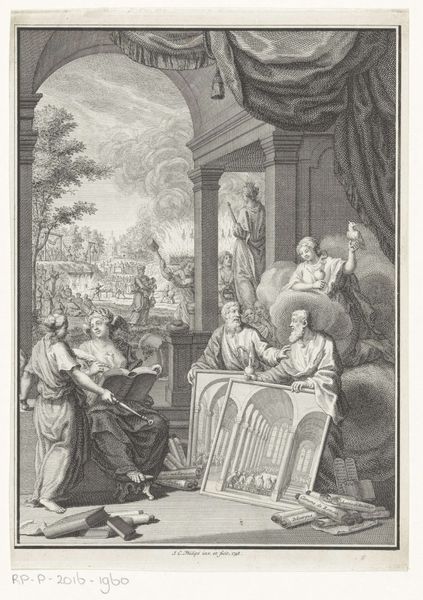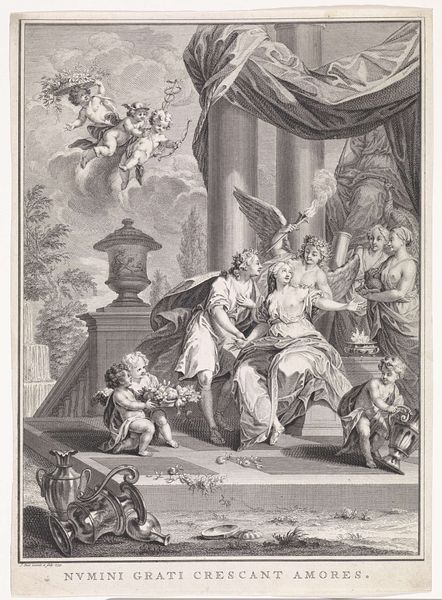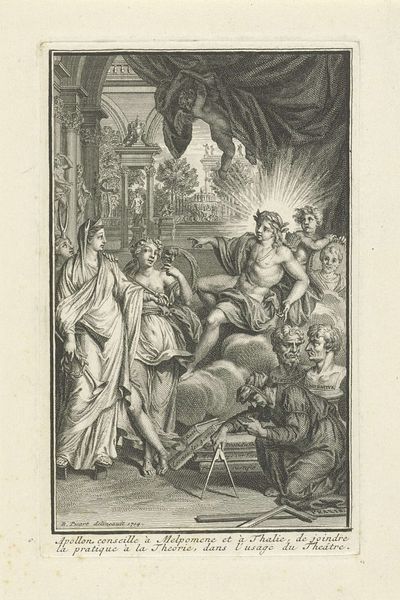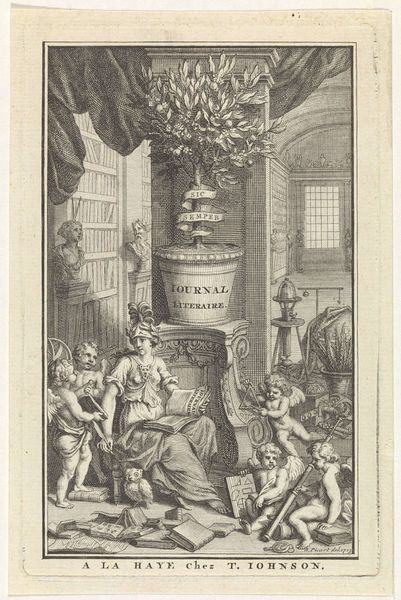
print, engraving
#
allegory
#
baroque
# print
#
old engraving style
#
traditional media
#
figuration
#
line
#
history-painting
#
engraving
Dimensions: height 148 mm, width 94 mm
Copyright: Rijks Museum: Open Domain
Editor: This is Bernard Picart’s "Allegorische titelpagina met Clio," created in 1731. It's an engraving on paper, and there's so much going on! My first impression is…theatrical, definitely Baroque, and kind of chaotic. What do you see in this piece? Curator: Ah, yes, a perfect encapsulation of Baroque sensibilities! This print pulsates with symbolic weight. Clio, the muse of history, instructs a young nobleman, pointing towards the theater of the world. Look closely. What do you notice about who lifts the curtain? Editor: It looks like…Father Time? Unveiling a stage filled with figures struck by fortune, love, and even death. So, it's a reminder that even historical figures were subject to human fate and emotions, and historical forces. Curator: Precisely. The globe represents earthly knowledge, the books, sources of learning, but the angel lifting the curtain tells us of mortality and immutable fate that overtakes everyone and everything despite those aspirations. Is this optimism or pessimism about the future, and the possibilities for the student? Editor: I hadn't thought of it that way before. Perhaps a balance – the potential for knowledge tempered by the inevitability of human experience. Clio looks determined, almost like, knowledge of history might help! Curator: Yes, history offering a guide in life’s chaotic drama. It suggests that history, when properly studied, can lead to a deeper understanding, even if not complete control, over destiny. A valuable insight for us too, centuries later. Editor: So the symbols help us unpack Picart's ideas about human life? Curator: Symbols preserve our experiences over time! This journey, like life, invites multiple readings, doesn't it?
Comments
No comments
Be the first to comment and join the conversation on the ultimate creative platform.

